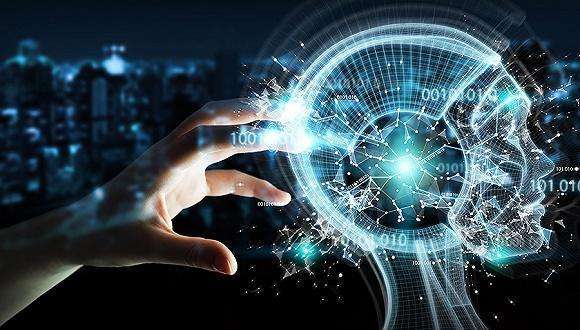创新背景
人工智能深入社会生活的各个方面,法律进程也不可避免地开始建设“智慧法院”,高新技术给司法带来便利的同时,也要明确科技和人文的界限,保证适当利用人工智能辅助司法,对于提高司法效率会有积极作用。
创新过程
适当利用人工智能进入司法系统对于法律发展会有积极意义。英国伦敦大学的科学家在2016年研制出一款能处理法律文件并对案件作出判决的人工智能。将600件纠纷相关的诉讼案的资料被输入人工智能程序,自动化运算的“审判”结果和人工审判结果一致率达79%。科学家们肯定人工智能对于司法效率的提高,但并不认为人工智能可以取代法官。

人工智能的运作本质是处理信息的过程,即“接收信息-处理信息-输出信息”,每一个步骤都需要确切的定义和结果。它是依赖于计算机科学生成的关于数据的技术,虽然能够拥有超越个人乃至群体的海量知识,但始终是依赖人类已有的知识和对它的设计编程,数据处理具有事后性质,只能对人类输入的已有知识和信息进行模式化的吸收和处理,无法即时适应人类社会日新月异的变化。

法律是随着现实社会发展不断改进完善的,是对现实社会的即时反映。司法审判以法律为根基,在人人平等的基础上维护公平正义,但它本质是一种对价值的衡量,包括普世价值、社会变化、个体情况等多方面因素。人工智能无法在价值衡量上和人类达到同样的深度。
并且,运用在司法领域的人工智能依靠的是日常生活中常见的通用技术,如信息处理、语音识别等。它可以被集中运用于流程性重复低效劳动以及依据模型简单推理等环节,辅助处理事务性工作,但对于疑难案件的事实认定、评价证据的证明力度、法律解释等其他司法情况,通用技术完全无法达到司法过程的广度需求。

人工智能在司法领域的运用最大的优势在于辅助法官,充分发挥信息处理的能力,介入司法活动的各个环节,在信息储存、数据运算、简单推理等方面帮助工作人员高效解决重复性、事务性的工作。在法律问答、信息处理环节数据化推进,自动制作文书并推送类案,辅助案件分析裁判。同时促使细节问题能够被及时发现纠正,降低重复性事务的时间成本,将时间和精力投入案件其他过程,优化司法资源。

人工智能对法官的辅助功能最重要的在于程序化约束法官行为,以客观无情的机器视角纠正法官的主观偏见,减少主观因素对案件审理的消极影响,并对案件结果进行可能性预测。
创新关键点
适当利用人工智能辅助司法过程,将信息处理的高效快速和案件审理的价值公正衡量相结合。
创新价值
提高案件处理效率,减少重复性事务的时间经历损耗,对法官和司法过程提供无主观情绪的参考,帮助司法高效公正。
Appropriately introduce artificial intelligence to assist justice
Appropriate use of ARTIFICIAL intelligence to enter the judicial system will have positive implications for legal development. Scientists at the University of London in the United Kingdom developed an artificial intelligence that can handle legal documents and make judgments on cases in 2016. The data of 600 dispute-related litigation cases was entered into the artificial intelligence program, and the consistency rate between the "trial" results of the automated operation and the manual trial results reached 79%. Scientists affirm that AI can improve judicial efficiency, but don't think AI can replace judges.
The essence of the operation of artificial intelligence is the process of processing information, that is, "receiving information - processing information - output information", and each step requires precise definitions and results. It is a technology that relies on computer science to generate data, although it can have massive knowledge beyond individuals and even groups, but it always relies on human knowledge and its design and programming, data processing has an after-the-fact nature, can only be the existing knowledge and information entered by human beings for patterned absorption and processing, can not immediately adapt to the rapid changes in human society.
The law is continuously improved and perfected with the development of the real society, and it is an immediate reflection of the real society. Judicial adjudication is based on law and upholds fairness and justice on the basis of equality for all, but it is essentially a measure of value, including universal values, social changes, individual situations and other factors. Artificial intelligence cannot reach the same depth in value measurement as humans.
Moreover, the use of artificial intelligence in the field of justice relies on common technologies common in daily life, such as information processing and speech recognition. It can be used intensively in the process of repetitive inefficient labor and simple reasoning based on the model to assist in handling transactional work, but for other judicial situations such as the determination of facts in difficult cases, the strength of the evaluation of evidence, legal interpretation, etc., the general technology cannot meet the breadth of the judicial process.
The biggest advantage of the use of artificial intelligence in the judicial field lies in assisting judges, giving full play to the ability of information processing, intervening in all aspects of judicial activities, and helping staff to efficiently solve repetitive and transactional work in terms of information storage, data operation, and simple reasoning. Advance data in legal Q&A and information processing links, automatically produce documents and push similar cases, and assist in case analysis and adjudication. At the same time, it promotes that details can be found and corrected in a timely manner, reduces the time cost of repetitive matters, devotes time and energy to other processes of the case, and optimizes judicial resources.
The most important auxiliary function of artificial intelligence for judges lies in procedurally constraining judges' behavior, correcting judges' subjective biases from an objective and ruthless machine perspective, reducing the negative impact of subjective factors on the trial of cases, and predicting the likelihood of case outcomes.
智能推荐
土壤科技创新思维 | 研究发现医疗物质在农用污泥中的化学变化
2022-10-15研究人员将农用污泥中的三种残留医疗物质提取出来进行分析,通过研究污泥中的医用残留净化后的化学变化来探索提升污水净化强度的可能性。
涉及学科涉及领域研究方向计算机图像处理创新思维 | 创新“可组合扩散”法可使用多个模型创建更复杂的图像
2022-10-10研究人员开发了一种新方法,该方法使用多个模型来创建更复杂的图像,并具有更好的理解力。
涉及学科涉及领域研究方向